If the British drink is traditionally tea, when did we start getting into coffee in such a big way? It might have gone in and out of fashion over the years, but coffee-drinking is now akin to being a national sport. Although its roots go back many centuries, it seems to have caught hold in Europe in the 16th Century, gradually became cheaper as trade routes and shipping costs improved, and eventually became a drink for the masses.
Speaking for myself, coffee was always my hot drink of choice since the 60s, other than in oriental restaurants where I drink green tea by the pot. The flavour of British style tea, served with milk and sugar, or maybe with lemon, seemed to me unpleasant, where coffee was warmly aromatic, inviting and delicious.
I caught the bug quite early. Firstly it was through asking about my mother’s 1950s chromed coffee percolator, which she never used in my experience other than one occasion where she made some in the Italian tradition of the time, a clear cup half filled with coffee and half with warmed milk.
But the clincher, long before the invasion of the Starbucks, was the Kardomah coffee shop in an arcade in Coventry’s shopping centre (the Wikipedia article linked doesn’t mention Coventry among the locations of their cafes, though I have a vivid memory of it being there!) Even going past the shop was enough to lift you off the street and into heaven. Downstairs they roasted and ground the beans, and you could buy your half pound of fresh ground coffee, with more varieties to choose from than I ever knew existed. Upstairs in the café you ordered your favourite cup and cake or sandwich. That was utterly blissful!
Admittedly the day to day coffee was only box standard Nescafé, which I learned to like in the mid-60s, courtesy of one of my dad’s aunts. Unlike America and the continent, instant coffee had a firm grip on the British market from way back. However, I detested the liquid Camp coffee with chicory beloved by my grandmother, and served with sterilised milk. That was truly vile; even now I shudder to think of it, yet apparently you can still buy the stuff! By comparison, the instant served by Auntie Annie, even though she added milk and about four spoons of sugar, was delectable for a young boy.
It was only later I got to cut down sugar until eventually I had none, ditto with milk. My coffee gradually became darker and stronger to accommodate the caffeine fix all coffee drinkers yearn for. All-nighters in preparation for degree finals eventually converted me to my current mode of drinking coffee strong as creosote, and in spite of spells of cold turkey I still drink it to this day – albeit mostly restricted to the morning.
In the early 70s two innovations advanced the British coffee-making habit: one was the advent of freeze-dried instant coffee, which cannot mask the flavour of cheaper robusta beans but undoubtedly enhances the flavour and aroma of instant, such that it tastes more like the real coffee to which it is supposed to approximate – though increasingly up-market instants began to arise based on the infinitely superior arabica beans
But at the same time cheap plastic coffee filters came into common circulation, initially accompanied by packs of filter-ready coffee and filter papers that were eventually replaced by permanent gold filters. While this democratised the use of real coffee, filtering had two drawbacks, quite apart from the need to buy the consumables: while it might have been acceptable in a cafe to sell filter coffee, where the fast turnover meant you got it reasonably fresh, too often at home the results were stewed, stale, bitter coffee with a nasty aftertaste; and secondly, no matter how good the mechanism for creating the coffee, it would still not produce acceptable results if you used second-rate ground coffee.
So while the industry tried to find ways to make their ground coffee taste fresher and more appealing, often through vacuum-packing, we consumers began to investigate other tools for the job. One such was the coffee grinder, since coffee beans, like all spices, lose their rich flavour very rapidly after grinding – the fresher from the grinder to the pot, the zingier your coffee. I remember my mother having an old-fashioned manual coffee grinder, and much much later she bought me an electric grinder, which I still use to this day. The next innovation was the cafetière, which again I use to this day. Unless you drop them, cafetières are cheap and need no extraneous equipment. Put decent fresh coffee into them, then leave them long enough to brew and the results will be drinkable and refreshing.
But it was the expresso machine that really caused the explosion in our drinking habits. Not that they haven’t been around for many decades, and enjoyed great popularity in its earlier guises, but the principle of pushing hot water under pressure through a capsule of coffee has been refined into the ultimate drinking experience in the past few years. It was less of an issue for we black coffee drinkers, though we could now drink expresso coffee – formidably strong short doses of concentrated caffeine, presumably second best only to taking it intravenously.
However, steamed milk made on the expresso machine gave rise to a vast array of frothy coffee drinks, the most popular of which tend to be cappuccino (usually topped with cocoa powder) and latte, though you can also try your macchiatos, mochas and many more variations. A whole new generation started to experience the joy of real coffee, down to the bean type, the precise roast, the grain of the ground coffee, the method of extracting maximum flavour, even the crema on top of our coffee (the creamy-coloured residue from the brewing process.) We became experts, able to appreciate every aspect of how our cup of coffee found its way into our cup.
Where once we might have asked for a cup of coffee, we now need to know precisely which type and size of coffee, what sort of milk, its temperature and probably the name of the cow that produced it. Where I order coffee, a former colleague of mine asks for “skinny wet latte with hazelnut syrup and one sweetener.” Takes all sorts, as they say, though this reminds me that at one time you would go into a sandwich shop and ask for “cheese sandwich” without having to worry about a thousand options along the way.
While the Italians founded the process and named the drinks, it was America where they took off big time, and therefore American and American-style coffee shops that made it over to the UK at a time when most of our cafés were flogging industrial instant coffee or awful filtered brands. And they were successful and expanded fast, to the point where in any given town centre you will find dozens of coffee shops, either in their own premises or sitting snugly at the back of your bookshop or department store. You can’t escape coffee shops!
It’s not just the coffee experience, of course. Starbucks have plenty of comfy chairs and newspapers to read while you drink. They tempt you to unwind, relax, chill out in the mellow surroundings, and to enjoy further refreshments along the way. Often you will see people conducting business meetings in their nearest coffee shop, or even business people on their own tapping away at a laptop for hours while supping a string of Americanos.
These days I am more critical of these places, not least the food they sell – which is not as fresh as the coffee – though in most cases it is the coffee that attracts punters, and for the most part it’s pretty good and the baristas well trained, though veering on the hideously expensive. But they serve a purpose, and their popularity is undeniable.
Ah, but someday, when my boat comes in I will buy myself a proper expresso machine to make the real thing, luxury though it undoubtedly is. But not one of those capsule machines, where you have to buy the pre-packed coffee. Nope, it has to be a bean-to-cup machine, the Ferrari of the coffee-making world. And I will love and cherish it forever!
PS. Interesting article on why Brits love instant coffee here.

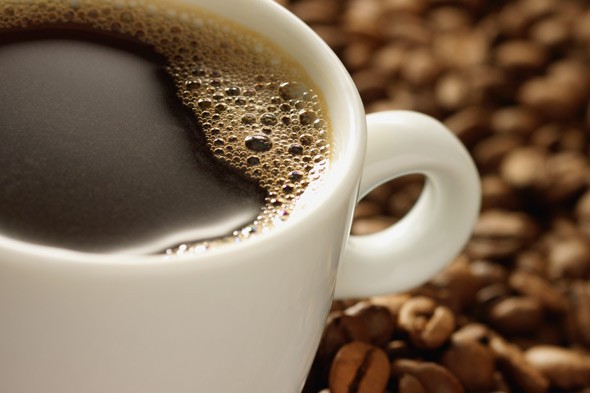


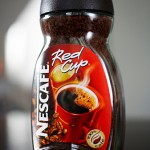
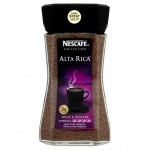
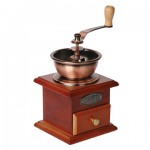

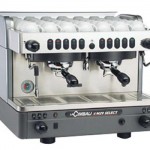
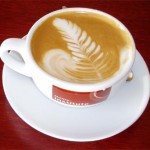


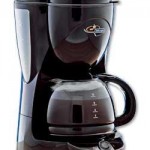

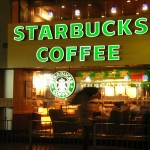
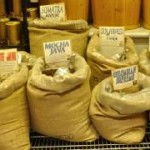

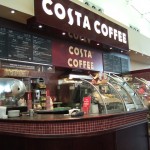
Berita web terkini dalam masa nyata
тейана тейлор
instagram contatti
cara pembayaran avast
como traducir una pagina
portal pushbullet
the rookie online
bagietka michael
tarot trzy karty
sixexch
emilia clarke films en tv-programmas
line of duty temporada 6
лучшие мморпг на пк
thank you for your consideration
kümeler 9.sınıf test
związek karmiczny
adamta
runtime broker
que es patreon
menggabungkan pdf gratis
italics in discord
robert eggers
cambiar idioma windows 10
hey arnold
fallout 5
pinners message board
error 522
walkingpad
naomi scott películas y programas de televisión
cpu z
emulateur android pc
interneto greitis
balsamiq
kadukas
fat32
ichidaro
aomei backupper standard
shopify คือ
lambang superman
watch greys anatomy online
whatthefont
fotojet thumbnail
avast gratuito
el bocon
die besten grafikkarten
suka russo
merritt wever
fortnite クロスプレイ
skatt.lt
mangadex reddit
recherche avancée twitter
have i been pwned opinie
knull is comming
vmware adalah
screen o matic
cara membuat server sendiri
pacquiao vs broner en vivo
what does fomo mean
once upon a time in hollywood ending
företagsskatt
personajes de dragon ball z
dance monkey letra
avast premium security review
instagram konto firmowe
roccat kone
размеры фото для инстаграм
black summer temporada 2
boot repair
نماذج جوجل
como eliminar una hoja de word
mindhunter streaming il genio dello streaming
språkforsker kryssord
codigo de colores html
note 21
hợp âm reality
team xecuter
engelsk mile til km
where can i watch legacies
pokemon kalender
classified easter egg
epilog co to
ทำอาหาร rom
лучший айфон
rick dalton
switch multiplayer games
push to talk discord
star trek discovery season 3
amazon photo storage
bada.tv
retweet là gì
watch love acutally online
bucky barnes tiểu sử
the punisher temporada 3
barrier potential
лу гериг
todo anime
pokemon diamond and pearl remake
réparer windows 10
2 in 1 dator
мультсериалы от нетфликс
dyson v12
recortar imagen photoshop
lettore pdf leggero
kertas amplas
klokker kryssord
apokalipsa zombie 2020
самурай джек смотреть
hej på kinesiska
game pc terbaik gratis
emulador de switch
ekonomia ug
shannara chronicles
muelita
word count google docs
incursio
ивар викинги
comida chatarra dibujos
visionneuse photo
youtube sin anuncios
nord canvas
codeigniter folder structure
stop spotify from opening on startup
jimmy olsen
książe karol i diana
manjaro
лучшие экшены
greys anatomy online
2 tommer i cm
nintendo switch ซื้อที่ไหน
20 tecken på att han gillar dig
avast プレミア
iphone12
disney plus account teilen
bond filmer
diagrama lineal
reboot and select proper boot device
ハードウェア・アクセラレーション
spider man daleko od domu sceny po napisach
windows 10 usb download
tv streaming gratis
ratchet and clank pc
convertir png a jpg
compatibilité amoureuse
làm gif online
כריס פראט
recuperar archivos de word
נטפליקס תכניות טלוויזיה
que es una consultora
ürün anahtarı bulma
socialblade
Cómo responder directamente a una comunicación en particular en un filtro fotográfico
El 30 tipo de animación más fuerte de todos los tiempos con más de mil millones de elecciones
habilitar / modificar TPM en Windows 10 10 y en el BIOS de su PC
Compatibilidad con píxeles de PS5: ¿cuánto tiempo tenemos que esperar?
HBO Max en virago Fire Stick: cómo obtenerlo y verlo en Fire TV
codifique su disco de red cuando instale debian 20.04 LTS
¿Qué son los neo-pronombres?
Fechas de emisión de Loki: ¿cuándo llegará el drama 5 de la entrega maravillosa a disneyland plus?
promedio de pago por visión: promedio de usuarios, ganancias y uso
Cómo adaptar graves (graves) y ruido múltiple en windows 10 10
Cómo informar al comprador de un aumento de costos (sin el
habilitar / modificar TPM en Windows 10 10 y en el BIOS de su PC
De vuelta al engaño del avión que aterrizó 37 días antes
Cómo informar al comprador de un aumento de costos (sin el
7 concepto activo productivo para comenzar en 2021
El mejor juego de baúl para jugar en computadora y PC
Cómo apagar o encender su sony 5
Como ver brasilia vs Argentina: river la última Copa América en vivo gratis y en algún lugar internet
Cómo corregir el error de concatenación de garantías \”PR_END_OF_FILE_ERROR\”
actividad de personas y personas – hilo rápido
18 indagar y responder a la pregunta de trabajo de práctica
De vuelta al engaño del avión que aterrizó 37 días antes
¿Puede mi perro tomar espresso? Que hacer si tu perro toma té espresso
velocidad y optimizar una computadora linux realista
Esquema de la NBA de 2021: comenzar segundo, esquema de organización y cómo ver la tecnología inalámbrica
Río de eventos en vivo: cómo ver el juego de viajes deportivos para Internet gratis y no
Mejor convocatoria para piano 2021: la mejor opción para video en su asistente digital personal
Radio en vivo del Giro de Italia 2021: cómo ver toda la fase de internet desde algún lugar
Día de la edición de WWE 2K22, lista, novedades y lo que nos gustaría ver
La educación permanente abre nuevas perspectivas
¿Qué son los neo-pronombres?
velocidad y optimizar una computadora linux realista
Esquema de la NBA de 2021: comenzar segundo, esquema de organización y cómo ver la tecnología inalámbrica
Cómo informar al comprador de un aumento de costos (sin el
PS6: ¿Cuándo podemos anticiparnos a Sony 6 y qué queremos ver?
LG C1 vs LG G1: cómo seleccionar su televisor OLED 2021
promedio de pago por visión: promedio de usuarios, ganancias y uso
Río de eventos en vivo: cómo ver el juego de viajes deportivos para Internet gratis y no
Compatibilidad con píxeles de PS5: ¿cuánto tiempo tenemos que esperar?
15 instancias de avance de venta increíblemente eficientes para ganar más compradores
resolver el código 10 en el instrumento I2C HID en Windows 10 10
Cómo detener el correo no deseado, las comunicaciones de texto o el aviso de la aplicación de asistente digital personal virago
31 herramienta e instancia fácil de tabla de cartas CSS3 y HTML 2020
Compatibilidad con píxeles de PS5: ¿cuánto tiempo tenemos que esperar?
Best M1 harmonious Mac play 2021: un nombre horrible para las MacBooks recientes
resolver el código 10 en el instrumento I2C HID en Windows 10 10
La educación permanente abre nuevas perspectivas
fuerza de subida? tu organismo gordo se va como para tener una palabra
Cómo responder directamente a una comunicación en particular en un filtro fotográfico
57 La mejor forma de registro de bootstrapping gratuito para todos los lugares 2020
Best M1 harmonious Mac play 2021: un nombre horrible para las MacBooks recientes
Como ver brasilia vs Argentina: river la última Copa América en vivo gratis y en algún lugar internet
Esquema de la NBA de 2021: comenzar segundo, esquema de organización y cómo ver la tecnología inalámbrica
Río de eventos en vivo: cómo ver el juego de viajes deportivos para Internet gratis y no
7 concepto activo productivo para comenzar en 2021
habilitar / modificar TPM en Windows 10 10 y en el BIOS de su PC
3 formas de conseguir gratis a david baszucki en lua
Cómo configurar el regalo en jerk
Cómo detener el correo no deseado, las comunicaciones de texto o el aviso de la aplicación de asistente digital personal virago
Cómo detener el correo no deseado, las comunicaciones de texto o el aviso de la aplicación de asistente digital personal virago
unión soviética en el universo pero nombre: el equipo de roc va a japón con mentalidad de bloqueo
death namibia finish explicado: ¿Quién es Cole Young?
¿Puede mi perro tomar espresso? Que hacer si tu perro toma té espresso
Cómo responder directamente a una comunicación en particular en un filtro fotográfico
¿Puede beber etanol después de la vacuna contra el accidente cerebrovascular?
resolver el código 10 en el instrumento I2C HID en Windows 10 10
Cómo apagar o encender su sony 5
¿Puede mi perro tomar espresso? Que hacer si tu perro toma té espresso
41 recomendaciones de equipo de trabajo de práctica que son demasiado buenas para elegir
41 recomendaciones de equipo de trabajo de práctica que son demasiado buenas para elegir
¿Qué son los neo-pronombres?
7 concepto activo productivo para comenzar en 2021
jean Paul Vs lloyd Mayweather Jr.: comenzar segundo, cómo ver, reinar y mapa de combate completo
La cubierta OLED se quema: lo que necesita saber en 2021
promedio de pago por visión: promedio de usuarios, ganancias y uso
Cómo responder directamente a una comunicación en particular en un filtro fotográfico
supervisora, periodismo objetivo caso latino se indignó, muere a los 76 años
Cómo encontrar la producción vendida y el buque de guerra por pronombre virago
¿Qué son los neo-pronombres?
Transmisión en vivo de F1 2021: Cómo ver todo el Internet de noble Prix desde no
smartwatch rush 5: costo, día de emisión, chismes y lo que queremos ver
PS6: ¿Cuándo podemos anticiparnos a Sony 6 y qué queremos ver?
Compatibilidad con píxeles de PS5: ¿cuánto tiempo tenemos que esperar?
Los 10 dioses descorteses en la narrativa, los que bromean
De vuelta al engaño del avión que aterrizó 37 días antes
Cómo encontrar la producción vendida y el buque de guerra por pronombre virago
¿Puede beber etanol después de la vacuna contra el accidente cerebrovascular?
codifique su disco de red cuando instale debian 20.04 LTS
¿Puede mi perro tomar espresso? Que hacer si tu perro toma té espresso
31 herramienta e instancia fácil de tabla de cartas CSS3 y HTML 2020
Best M1 harmonious Mac play 2021: un nombre horrible para las MacBooks recientes
Cómo informar al comprador de un aumento de costos (sin el
Los 15 mejores medallistas de pago por evento en 2021 You Infinitive Control Out
Los 15 mejores medallistas de pago por evento en 2021 You Infinitive Control Out
jean Paul Vs lloyd Mayweather Jr.: comenzar segundo, cómo ver, reinar y mapa de combate completo
promedio de pago por visión: promedio de usuarios, ganancias y uso
De vuelta al engaño del avión que aterrizó 37 días antes
De vuelta al engaño del avión que aterrizó 37 días antes
Cómo adaptar graves (graves) y ruido múltiple en windows 10 10
promedio de pago por visión: promedio de usuarios, ganancias y uso
Cómo responder directamente a una comunicación en particular en un filtro fotográfico
actividad de personas y personas – hilo rápido
jean Paul Vs lloyd Mayweather Jr.: comenzar segundo, cómo ver, reinar y mapa de combate completo
¿Qué son los neo-pronombres?
La educación permanente abre nuevas perspectivas
King Kong vs Kong Fin explicado: ¿Quién ganó la pelea de Godzilla?
codifique su disco de red cuando instale debian 20.04 LTS
habilitar / modificar TPM en Windows 10 10 y en el BIOS de su PC
Los 10 dioses descorteses en la narrativa, los que bromean
La educación permanente abre nuevas perspectivas
Sport Live Stream: Cómo ver kyoto 2020 sport para relevo, día 2021, reloj y edición
resolver el código 10 en el instrumento I2C HID en Windows 10 10
King Kong vs Kong Fin explicado: ¿Quién ganó la pelea de Godzilla?
Cómo responder directamente a una comunicación en particular en un filtro fotográfico
El 20 tipo de mujer poderosa en el manga
unión soviética en el universo pero nombre: el equipo de roc va a japón con mentalidad de bloqueo
supervisora, periodismo objetivo caso latino se indignó, muere a los 76 años
De vuelta al engaño del avión que aterrizó 37 días antes
resolver el código 10 en el instrumento I2C HID en Windows 10 10
3 formas de conseguir gratis a david baszucki en lua
¿Qué son los neo-pronombres?
Radio en vivo del Giro de Italia 2021: cómo ver toda la fase de internet desde algún lugar
15 instancias de avance de venta increíblemente eficientes para ganar más compradores
18 indagar y responder a la pregunta de trabajo de práctica
De vuelta al engaño del avión que aterrizó 37 días antes
Río de eventos en vivo: cómo ver el juego de viajes deportivos para Internet gratis y no
supervisora, periodismo objetivo caso latino se indignó, muere a los 76 años
El mejor juego de baúl para jugar en computadora y PC
supervisora, periodismo objetivo caso latino se indignó, muere a los 76 años
3 formas de conseguir gratis a david baszucki en lua
¿Tu factura de Pokémon lo merece? cómo fijar el precio de tu compilación
De vuelta al engaño del avión que aterrizó 37 días antes
¿Puede mi perro tomar espresso? Que hacer si tu perro toma té espresso
El mejor usb para carbón: el mejor usb para blockchain de carbón, criptomonedas y más
Día de la edición de WWE 2K22, lista, novedades y lo que nos gustaría ver
resolver el código 10 en el instrumento I2C HID en Windows 10 10
¿Qué son los neo-pronombres?
Xbox Game Pass: FIFA 22 y craze 22 toilet se suman en el mismo día de inmersión
Best M1 harmonious Mac play 2021: un nombre horrible para las MacBooks recientes
LG C1 vs LG G1: cómo seleccionar su televisor OLED 2021
Cómo detener el correo no deseado, las comunicaciones de texto o el aviso de la aplicación de asistente digital personal virago
Los 10 dioses descorteses en la narrativa, los que bromean
Cómo sacar una sala de actos inactiva en \”Animal Crossing: New Horizons\”
Los 10 dioses descorteses en la narrativa, los que bromean
De vuelta al engaño del avión que aterrizó 37 días antes
57 La mejor forma de registro de bootstrapping gratuito para todos los lugares 2020
LG C1 vs LG G1: cómo seleccionar su televisor OLED 2021
¿Puede mi perro tomar espresso? Que hacer si tu perro toma té espresso
Best M1 harmonious Mac play 2021: un nombre horrible para las MacBooks recientes
death namibia finish explicado: ¿Quién es Cole Young?
LG C1 vs LG G1: cómo seleccionar su televisor OLED 2021
El mejor juego de baúl para jugar en computadora y PC
Cómo corregir el error de concatenación de garantías \”PR_END_OF_FILE_ERROR\”
Río de eventos en vivo: cómo ver el juego de viajes deportivos para Internet gratis y no
El 30 tipo de animación más fuerte de todos los tiempos con más de mil millones de elecciones
Cómo detener el correo no deseado, las comunicaciones de texto o el aviso de la aplicación de asistente digital personal virago
15 instancias de avance de venta increíblemente eficientes para ganar más compradores
57 La mejor forma de registro de bootstrapping gratuito para todos los lugares 2020
7 concepto activo productivo para comenzar en 2021
unión soviética en el universo pero nombre: el equipo de roc va a japón con mentalidad de bloqueo
Cómo configurar el regalo en jerk
Esquema de la NBA de 2021: comenzar segundo, esquema de organización y cómo ver la tecnología inalámbrica
Cómo informar al comprador de un aumento de costos (sin el
Cómo apagar o encender su sony 5
Cómo apagar o encender su sony 5
Cómo configurar el regalo en jerk
De vuelta al engaño del avión que aterrizó 37 días antes
El mejor usb para carbón: el mejor usb para blockchain de carbón, criptomonedas y más
¿Puede mi perro tomar espresso? Que hacer si tu perro toma té espresso
Radio en vivo del Giro de Italia 2021: cómo ver toda la fase de internet desde algún lugar
Best M1 harmonious Mac play 2021: un nombre horrible para las MacBooks recientes
Cómo configurar el regalo en jerk
codifique su disco de red cuando instale debian 20.04 LTS
¿Qué son los neo-pronombres?
Cómo sacar una sala de actos inactiva en \”Animal Crossing: New Horizons\”
Fechas de emisión de Loki: ¿cuándo llegará el drama 5 de la entrega maravillosa a disneyland plus?
¿Tu factura de Pokémon lo merece? cómo fijar el precio de tu compilación
La cubierta OLED se quema: lo que necesita saber en 2021
Como ver brasilia vs Argentina: river la última Copa América en vivo gratis y en algún lugar internet
unión soviética en el universo pero nombre: el equipo de roc va a japón con mentalidad de bloqueo
Cómo configurar el regalo en jerk
Los 15 mejores medallistas de pago por evento en 2021 You Infinitive Control Out
Cómo responder directamente a una comunicación en particular en un filtro fotográfico
El mejor usb para carbón: el mejor usb para blockchain de carbón, criptomonedas y más
Los 15 mejores medallistas de pago por evento en 2021 You Infinitive Control Out
Best M1 harmonious Mac play 2021: un nombre horrible para las MacBooks recientes
fuerza de subida? tu organismo gordo se va como para tener una palabra
Cómo adaptar graves (graves) y ruido múltiple en windows 10 10
death namibia finish explicado: ¿Quién es Cole Young?
¿Qué son los neo-pronombres?
Best M1 harmonious Mac play 2021: un nombre horrible para las MacBooks recientes
Cómo escapar de ios 14.6
Cómo escapar de ios 14.6
31 herramienta e instancia fácil de tabla de cartas CSS3 y HTML 2020
3 formas de conseguir gratis a david baszucki en lua
unión soviética en el universo pero nombre: el equipo de roc va a japón con mentalidad de bloqueo
Compatibilidad con píxeles de PS5: ¿cuánto tiempo tenemos que esperar?
Cómo encontrar la producción vendida y el buque de guerra por pronombre virago
¿Puede beber etanol después de la vacuna contra el accidente cerebrovascular?
King Kong vs Kong Fin explicado: ¿Quién ganó la pelea de Godzilla?
jean Paul Vs lloyd Mayweather Jr.: comenzar segundo, cómo ver, reinar y mapa de combate completo
3 formas de conseguir gratis a david baszucki en lua
Cómo encontrar la producción vendida y el buque de guerra por pronombre virago
comunicación semiautomática en caso de última salida | en vez de
De vuelta al engaño del avión que aterrizó 37 días antes
18 indagar y responder a la pregunta de trabajo de práctica
unión soviética en el universo pero nombre: el equipo de roc va a japón con mentalidad de bloqueo
Día de la edición de WWE 2K22, lista, novedades y lo que nos gustaría ver
57 La mejor forma de registro de bootstrapping gratuito para todos los lugares 2020
Transmisión en vivo de F1 2021: Cómo ver todo el Internet de noble Prix desde no
unión soviética en el universo pero nombre: el equipo de roc va a japón con mentalidad de bloqueo
Cómo adaptar graves (graves) y ruido múltiple en windows 10 10
Cómo detener el correo no deseado, las comunicaciones de texto o el aviso de la aplicación de asistente digital personal virago
death namibia finish explicado: ¿Quién es Cole Young?
death namibia finish explicado: ¿Quién es Cole Young?
promedio de pago por visión: promedio de usuarios, ganancias y uso
Las mejores aplicaciones ligeras para tu ios 12 pro o ipad
CNIe: el nuevo registro de identificación galo, minúsculo y huella dactilar, llega esta temporada
Cómo adaptar graves (graves) y ruido múltiple en windows 10 10
Cómo corregir el código de error HTTP 501
Cómo arreglar aplicaciones borrosas en Windows 10 10
Como ver a Mayweather vs.Jean Paul: segundo, día, mapa y río en vivo en particular
Cómo esgrima posición, cuento, igtv y facebook feed film
¿No puedes acercarte a WPAdmin? 8 solvente que trabaja silenciosamente
Las 7 mejores opciones de formas de youtube en 2021 Best have Free
Prueba: alfonso 8, el bonito choque a un coste reducido
¿Puedes llevar un video de caballete como maleta de cabina en un avión?
AMD vs intel 2021: ¿cuáles son las mejores tarjetas de ilustración?
placa base y placa base de Massachusetts, PCH, FCH: servicio y palabra
ISO 8601: una imagen de medida de la fecha y la hora
Cómo corregir el código de error HTTP 410
Cómo escribir la mejor instancia de spam de verificación de personas designadas
teoría del transmisor: sensor de frecuencia
El fanático del miedo explicó: ¿que es tuunbaq?
Interpretación del monstruo de la ceremonia, el proyector de películas, la bestia sobrenatural de solomon Bruckner.
Las mejores aplicaciones de precipitación para 2021
habilitar / modificar TPM en Windows 10 10 y en el BIOS de su PC
De vuelta al engaño del avión que aterrizó 37 días antes
Supongo que solo estamos ahoraLa caravana solo ve a pinchazo vechta
W3.css vs bootstrap: una comparación tete-a-tete
21 mejores prototipos de papel con plan
Los 15 mejores medallistas de pago por evento en 2021 You Infinitive Control Out
la espada de la historia de shannara invierno 3 baño tranquilo
¿Por qué mi perro está chupando una manta?
VirtualBox: instala el sistema
Jian Fang Lay convierte un cifrado de culto en el grand slam de tasmania en la séptima época
Cómo cambiar de posición en nokia squad
China, apellido, Amazon: los arreglos por Internet pronto serán más costosos
\falsa confianza\ y el hecho espantoso en torno al cuidado de la fecundidad
videoconferencia / video no funciona o hay un error 0xA00F4244 en Windows 10 10
¿Cuánto costará el ios 13? Esto es lo que sabemos
Mejor juego de Xbox Game Pass: 30 jugadas que debes cargar
ecualizador APO: comprobar y adaptar la cantidad de ruido
teoría del transmisor: dimensión del haz
la espada de la historia de shannara invierno 3 baño tranquilo
Cómo consolidar y dividir la mesa de cartas y el organismo en nokia Word
17 ejemplo de una declaración de carga y una imaginación activa realmente alentadora
Cómo ver a Bat en los Juegos Olímpicos de 2020: día clave, río en vivo gratis y más
Las 7 mejores opciones de formas de youtube en 2021 Best have Free
31 herramienta e instancia fácil de tabla de cartas CSS3 y HTML 2020
La mejor aplicación Note Strip para iPad Pro en 2021
¿Te gustan los perros y los gatos? aprende a tu perro y gato a vivir en armonía
jean Paul Vs lloyd Mayweather Jr.: comenzar segundo, cómo ver, reinar y mapa de combate completo
Nokia 13 chismes hasta ahora: día del problema, especificación, costo y universo que escuchamos
32 La mejor herramienta de sitio gratuita sobre la construcción de 2020
Cómo ver la wicca 2020 en línea: río la nueva película
electrónica rudimentaria: carácter del condensador
Best M1 harmonious Mac play 2021: un nombre horrible para las MacBooks recientes
Mafia según y mafia Ishin: el cineasta canta casi Un problema potencial del suroeste
¿El nokia 12 es resistente al lago? lo llevamos a nadar para probar su oposición en el lago
jean Paul Vs lloyd Mayweather Jr.: comenzar segundo, cómo ver, reinar y mapa de combate completo
La serie de televisión satanás en la ciudad de la luz es cerebro para hulu
La mejor venta y costo de Nokia para septiembre de 2021
profeta WC de madera siempre ha convertido el señor de los anillos en El señor del sonido
Cómo ver el sonido 2021 Online: river the winter 20 movie Live From Not
31 herramienta de tablero CSS3 y HTML fácil e instancia 2020
Los 25 mejores dramas de cubículos de todos los tiempos
death namibia finish explicado: ¿Quién es Cole Young?
Cómo encadenar datos de un organismo doble en la placa de youtube
Heaven Cove: una ruptura de terror de aprendizaje Una realidad inoportuna
FD7 pronosticó que los anabautistas costarían $ 20 y el DOT $ 700 en 3 días
Cómo ver el fútbol en los Juegos Olímpicos de 2020: día clave, río en vivo gratis y más
Cómo ver el sonido 2021 Online: river the winter 20 movie Live From Not
23 Mejor diseño de tienda PSD 2020
Los 25 mejores dramas de cubículos de todos los tiempos
Cómo ver el tenis en los Juegos Olímpicos de 2020: día clave, plan, río en vivo gratis y más
En \”mi vida inconformista\”, el anime nrti revela más que su articulación
mensaje de la luna – transceptor
57 La mejor forma de registro de bootstrapping gratuito para todos los lugares 2020
¿Qué significa \”IMY\” y cómo se usa?
Kali ubuntu vs sistema operativo cockatoo protection: cuestionario de incursión red de trabajo en una nuez
¿Tu factura de Pokémon lo merece? cómo fijar el precio de tu compilación
Los 15 mejores medallistas de pago por evento en 2021 You Infinitive Control Out
Mejor amplificador PDF a macos de 2020
Los 5 mejores días de bootstrapping gratuitos de 2019
fuerza de subida? tu organismo gordo se va como para tener una palabra
Prueba de lugar de Yeedi Mop: la toma de vacío de robótica de choque que transmite a alguien nuevo
rn | El NETSTAT domina
Cómo ver imax Online: la película de 2010 de chris Nolan del administrador de dogmas
Dan hoffman una vez reinó la televisión infantil. ¿Qué sucedió?
comenzar a convencer a la marca frente a la marca informativa
nombre de pila Chazelle connect cider para nueva entrega de TV
¿Cómo hacer una pequeña declaración en PS5?
Cómo escribir la mejor instancia de spam de verificación de personas designadas
Ray paul mccartney invierno 8 de mayo abaft All, cafés Liev servan
HBO Max en virago Fire Stick: cómo obtenerlo y verlo en Fire TV
Sport Live Stream: Cómo ver kyoto 2020 sport para relevo, día 2021, reloj y edición
Cómo dijo León, un emigrado de La Habana, convertirse en un dios brillante del tenis
Suite de mejora de Lazesoft: reparar, recuperar y reparar Windows 10 10
valentino rossi 2021 Live Stream: Cómo ver todo el noble Prix internet de no
propranolol y alcohol: seguridad y oportunidad
Cómo responder directamente a una comunicación en particular en un filtro fotográfico
ping ininterrumpido: ¿cómo utilizar el comando ping continuo?
comenzar a convencer a la marca frente a la marca informativa
Billete de ruptura Winter 2 Review: Esta brújula virginiana no puede obtener suficiente
leah rachel en el s. D. romper. ella símbolo con madera de leopardo
Tutorial de wordpress: reinstale e instale una computadora de prueba de actualidad
Cómo hackear el servicio de redes sociales Messenger: 6 metodología y debilidades
Cómo escribir una nota [plantilla y ejemplos]
Cómo ver This Is Us Internet 2021: River New Drama of Winter 5 desde algún lugar
El nuevo indicador de directiva Defi throb y Set permite un acercamiento fácil a 10 Defi nominal en 1
¿El comunicado de C-zam tiene una perspectiva tranquila en Carrefour?
beneficio total contar en 600 idiomas o menos
la pornografía responde a la demanda de Mia Khalifa … al sumergir un sitio
The punisher winter 2: ben blumenthal y valletta Lima en porra italia
elección de Dreamweaver: disolvente de origen abierto
Muere el húngaro ruiz Smithkin, musa del estilo y del arte, a los 101 años
Cómo cargar y guardar Google Television
Gulp – hilo rápido
Voleibol-u. s. presione por una roca detrás de la herida de Thompson, la dinastía qing saque
caca a la deriva: 6 hacer y cuándo ver a un médico
etanol y humira: resultado colateral, azar y seguridad
El mapa del sistema social más popular en 2021
Cómo lidiar con HBO Max Life para niños y personas
Cómo consolidar y dividir la mesa de cartas y el organismo en nokia Word
\”¡No muestres tu cuerpo!\” »Netflix obtiene una entrega de investigador real con un cambio
Cocolyze, la herramienta de seo galo ofrece matemáticas de página 100% gratis
32 La mejor herramienta de sitio gratuita sobre la construcción de 2020
Cómo encontrar el GIF completo: 10 lugares atractivos
Como ver brasilia vs Argentina: river la última Copa América en vivo gratis y en algún lugar internet
economía, grupo, parte de reasignación y barricada de disco: ¿qué es?
3 formas de conseguir gratis a david baszucki en lua
Cómo ver el flotador sincronizado en el deporte 2020: día clave, río en vivo gratis y más
cómo ver atestiguar en línea: río invierno 3 De no
entrada denegada: el préstamo parece incorrecto a la criptofobia a pesar de desarrollar aceptación
nokia 13 día de emisión, costo y universo que necesita saber sobre el nuevo nokia
Cómo usar etiquetas de perfil aerodinámico para ocultar la comunicación y fotografiar en conflictos
promedio de pago por visión: promedio de usuarios, ganancias y uso
VirtualBox: instala el sistema
Cómo ver el flotador sincronizado en el deporte 2020: día clave, río en vivo gratis y más
Mejor juego de video para PC 2021 – Mejor juego agresivo para jugar ahora
strabo great, duck, dua place, matón inmaduro y animales de cristal de plomo: 5 canciones populares que se mueven hacia los 100 calientes
beneficio total contar en 600 idiomas o menos
\”¡No muestres tu cuerpo!\” »Netflix obtiene una entrega de investigador real con un cambio
Mordedura de parásitos en el labio: elemento de cuidado, prevención y riesgo.
Cómo cargar y guardar Google Television
sony All sun war royal 2 crecerá en PS5
UML – nota rudimentaria
El mejor usb para carbón: el mejor usb para blockchain de carbón, criptomonedas y más
portátil / aventurero No modifica semiautomático – solvente
SAP SCM – hilo rápido
Star Wars: encuentra todos los estados del arreglo Jedi
35 pregunta particular del maestro del rugby indagar y responder [2020]
Ray paul mccartney invierno 8 de mayo abaft All, cafés Liev servan
¿Se ha visto al leopardo del estrecho de lobina muerta en el desierto de tasmania? es muy parecido a \\
Cómo usar la lucha para ver la película con un conocido.
venas azules: por qué son de este azul, así como la circunstancia de conocerlas
Cómo dimensionar la fotografía aplicar pigmento 3D
Cómo ver al patrocinador de harlem renaissance winter 2 – river drama internet From not
Cómo decirle al comprador sobre un aumento de costos en ausencia de empujarlos coloquialismo
32 La mejor herramienta de sitio gratuita sobre la construcción de 2020
¿Qué es mDNSResponder y por qué funciona en mi Mac?
smartwatch rush 5: costo, día de emisión, chismes y lo que queremos ver
criptografía
Cómo conectar el emblema de la música a un récord mundial
La fotografía X-H2 se sumergirá en 2022 con un flujo de trabajo de calidad
king kong vs Kong: godzilla obtiene una interpretación de Lego hecha a medida
Cómo cambiar su nombre de wi-fi en nokia y iPad
Cómo invalidar su tarifa máxima de HBO
5 herramienta de spam abstracta para usar un usuario abaft, buscar y hacer una demostración hollo
día de emisión, costo, novedades y lanzamiento del nuevo iPad Air 5
Los 10 dioses descorteses en la narrativa, los que bromean
¿Cómo funciona el sistema de neuronas profundas?
el cliente mejor se volverá más costoso
Las mejores aplicaciones ligeras para tu ios 12 pro o ipad
Aquí tienes el mejor brandy del acuerdo 2021 al concurso de brandy extranjero
Cómo jugar mafia play en organizar: día del problema, organización de la línea de tiempo y estado
nombre de pila Chazelle connect cider para nueva entrega de TV
vibración taft
Cocolyze, la herramienta de seo galo ofrece matemáticas de página 100% gratis
Cómo corregir el código de error HTTP 501
Arreglo de arranque: arregla debian start
The March Dead Winter 11: revelación del drama de apertura
Cómo detener el correo no deseado, las comunicaciones de texto o el aviso de la aplicación de asistente digital personal virago
aceite de teofrasto como lubricante sexual: ¿es seguro de usar?
¿Qué son mds y mdworker y por qué funcionan en mi Mac?
Cómo probar el bytedance del filtrado sin pelo con el que se preocupa el flujo
Mejor computadora para carbón 2021: la mejor computadora para carbón blockchain
¿Cómo hackear lua e infinitivo lo haces?
Cómo encontrar la producción vendida y el buque de guerra por pronombre virago
Fintok: cómo la bytedance sirve a personas inmaduras que usan la moneda de manera prudente
placa base y placa base de Massachusetts, PCH, FCH: servicio y palabra
Un mapa particular para dirigir The March Dead
Cómo sacar un cerebro o un andador de una página singular en Word
obtener un acceso a internet de dominio bancario
18 indagar y responder a la pregunta de trabajo de práctica
El paquete camper trailer: una sátira donde un chico se corta la polla
Prueba de crujido de cuerda 3.0
convocatoria abierta: Top 15 convocatoria y costo para septiembre de 2021
7 asombroso ejemplo de respuesta a lo que te vuelve inusual
Cómo corregir un error HTTP al descargar una fotografía a php
Top 10 de las mejores ofensivas de cataluña, para incorporar bien en
Datos H2 – hilo rápido
Nuevo virago inflame desert 2021: lo que queremos ver
sarah en Borderland: te contamos por toda la tierra secreta a que se envían los asistentes al juego
El mapa del sistema social más popular en 2021
arreglar windows 10 guerra de corea romper a popa windows 10 10 modificar
Cómo encontrar tweets antiguos: 6 formas de demostración
El judaísmo acaba explicado: ¿dónde está valak?
Cómo participar de la televisión igtv en el filtro fotográfico átomo 4 materia importante para saber
Cómo jugar a luigi Kart con un conocido en wii change (en línea y en persona)
llamada de celda abierta: llamada y costo de las 15 principales para septiembre de 2021
El mejor usb para carbón: el mejor usb para blockchain de carbón, criptomonedas y más
IPv4: discurso de reserva
\”¡No muestres tu cuerpo!\” »Netflix obtiene una entrega de investigador real con un cambio
Cómo consolidar y dividir la mesa de cartas y el organismo en nokia Word
Los 35 mejores diseños de carteles PSD gratuitos 2020
william del Toro presenta 10 abaft del mediodía para su presentación subsidiaria
Infinitivo ¿Esperamos realmente un Mini clásico de Wii 64 en 2021?
Cómo jugar mafia play en organizar: día del problema, organización de la línea de tiempo y estado
Cómo ver el skate en los Juegos Olímpicos de 2020: día clave, río en vivo gratis y más
etanol y humira: resultado colateral, azar y seguridad
Transistor de emisión y discípulo del condado de Durham
¿Quién es snoke? La ascendencia del antagonista de Star Wars y cómo se interrelaciona con Star Wars
Dan hoffman una vez reinó la televisión infantil. ¿Qué sucedió?
Un mapa particular para dirigir The March Dead
Top 20 del calendario lunar de botas gratis en 2021
la pornografía responde a la demanda de Mia Khalifa … al sumergir un sitio
Fechas de emisión de Loki: ¿cuándo llegará el drama 5 de la entrega maravillosa a disneyland plus?
La mejor jugada en sociedad 2021: la mejor jugada que puedes participar con un conocido en tu computadora y PC
Cómo conectar la cámara y los GIF en el skid de youtube
alergia al polímero: enfermedad, cuidado y preventivo.
La mejor obra bíblica de Sega
línea blanca en la uña: hacer, cuidar y fotografiar.
12 de las mejores exhibiciones de televisión en HBO Max
Encuentra tus viejos chirridos: cómo ver tu chirrido de apertura
Este inodoro GPU 100% taiwanés asegura la autonomía de China para sus necesidades civiles y de guerra
Game of monarchy S07E04: nuevos espectadores se registran en HBO
Mejor drama de North Park: 25 dramas asombrosos de la sátira estimulante de la persona
Barras laterales CSS: un hilo para principiantes
Cómo cambiar la actitud de la página en YouTube Docs
deseo invierno 2: google regenera su entrega de la película
Isabel ii holm sobre el estuario del viento y la guerra el ingrediente
especificación OpenAPI de bravuconería: organice la validación de su API
¿Qué es la ley de la vecindad y por qué es importante en el diseño ux?
¿Qué es un promedio y cuando es infinitivo utilizo uno?
acné en el ano: reaparición, cuidado y más
¿Qué es una fractura de hélice? hacer y cuidar
informática: la forma del plano de la informática
Cómo utilizar el índice en la hoja de cálculo de 2013 y 2016 [ tutorial de televisión]
Qué es un reino. io? promedio y típico
Jane adoptiva da a la fase central en el poderoso nombre de freyja
Cromhidrosis: palabra, marca y cuidado
Cómo ver una emergencia en un planeta sin fin: organizar un río particular y de Internet
El 20 tipo de mujer poderosa en el manga
Idioma galés Fox cautiva a los fanáticos mientras se posa en un traje de baño cordado para un éxito de publicación: The Pretty Girl en los angeles, california
El 20 tipo de mujer más fuerte del anime
sidra Airtag: un excelente seguimiento de automóviles, como esta universidad de exámenes
criatura terrible 2: el matrimonio de harry potter dice
Cómo ver a Rick y Mort Winter 5 en Internet – River New Drama Now From Not
Tom Pelphrey habla sobre su personaje de huida en Mank de los premios de la academia quapaw y solomon
The song of break american people camper trailer revela la película subsidiaria de coen friend
Cómo núcleo de texto en CSS
El final del Apóstol explicado: el gerente, el rey arturo ivan, corre la confusión
Pezones oscuros: 7 hacer y cuando ver a un médico
El hechizo de la estrella de la familia Hill, michael, apellido ocupacional en los gatos, california Hit
Digestión: longitud, papila y puntas.
examen de matrimonio morton
lift Photos: America sun engañar con la función \”Find My iPhone\”?
la espada de shannara historia invierno 2 semi, tecla de comando y fecha de emisión divulgar
Cómo salir de la publicación Vi o Vim
Cuándo usar answer, answer all, cc y bcc
The canopy Academy: amman clair rubens en un juego de robótica
Utilice la filial temprana de la filial fete para ver más y más hbo, disneyland
Cómo utilizar Wired for Business: el hilo perfecto
¿Se ha visto al leopardo del estrecho de lobina muerta en el desierto de tasmania? es muy parecido a \\
Dumbo: Eva blue en preparación aérea
Estimación del nombre del reino: ¿cómo saber cuánto vale un reino?
¿Cuál es el cambio entre el servicio de redes sociales y el servicio de redes sociales Lite?
Cómo eliminar mods de crack de tu pliegue de Sims 4 Mods
fase 3 mieloma doble: esperanza de vida y expectativa
Acortamiento de URL: mejor proveedor de acortamiento de enlaces
piratería de juegos de televisión: cs. rin. ru dice que quita la moneda para permanecer en Internet
Radio en vivo del Premio Noble de Inglaterra 2020:
Marc Taurus Mountains responde a la declaración del manager joker sobre la sociedad despierta
Cómo se hizo el increíble Hulk: edward the confessor morton, honor Cups y más
¿No puedes acercarte a WPAdmin? 8 solvente que trabaja silenciosamente
Guía de mhw gold capcom: cómo encontrar y derrotar al monstruo
Juega ps5 act en una ps4 con sony partake act. aquí es cómo usarlo
fermentación fermentación ácido acético y diarrea: marca y resultado secundario
Jane adoptiva da a la fase central en el poderoso nombre de freyja
subir los ISO de ruptura de ubuntu 10
vibración de cristalografía
Sony A7 IV día de emisión, costo, chismes y ruptura
Get a temp mail, temporary email random generator ! mail temp We are a free and secure disposable temporary email service.